Sales at Tesco’s US chain are growing. So why do experts maintain it doesn’t have a future unless it undergoes dramatic change, asks Liz Hamson
Fresh and easy? The joke was that shoppers found Tesco's US chain Fresh & Easy Neighborhood Market neither when it launched.
But this week, there were further signs they are warming to it. The 155-strong chain, which has just turned three years old, posted a 38.5% uplift in third-quarter sales after a strong Thanksgiving and a 9.8% rise in like-for-likes.
Given that Tesco's US dream has until recently been more of a nightmare (the chain has racked up losses of £465m since launch), it's no surprise the figures have put a smile on Tim Mason's face. "We're really pleased with the like-for-like sales growth, particularly given a declining grocery market in the US where our competitors are struggling with negative like-for-like sales," says the US chain's CEO.
Better still, it supports Sir Terry Leahy's declaration that the chain is on track to break even in 2012/13 while research shows sky-high customer approval (Redburn Partners claims 82% of customers prefer it to rival Trader Joe's). Even recent news it was "mothballing" 13 stores was compensated for by plans to open 22 new stores early next year 12 in the virgin territory of Northern California.
So why are experts still convinced it stands no chance of long-term success without Tesco dramatically changing the business model, or buying another retailer?
It is hard for anyone with a British retail sensibility to get a feel for how well or badly Fresh & Easy is doing by simply walking around a store. When The Grocer visited its Alhambra outlet in LA last month, it seemed quiet, despite being lunchtime; the decor looked a tad drab; and the fresh offer looked either over-packaged (the fruit or veg) or under (the ready meals). Yet, the feedback was overwhelmingly positive from the consumers I spoke to, praising its fresh offer and prices. There was only one criticism: it wasn't bigger.
Actually, it is one of the best-performing stores in the estate, says neighborhood affairs director, Roberto Munoz, an achievement that's all the more remarkable given the diverse demographic it serves. But that's the beauty of the model, he says. "What Tesco has done so masterfully is to create a store for everyone. So we can open in areas like Compton, but also Manhattan Beach and give them basically the same range the same high quality, low cost food."
Having "finetuned" the offer refreshing the fascia and decor, putting more of an emphasis on value, introducing 1,000 new lines and expanding frozen it has addressed the few consumer concerns there were, adds Mason. "We've built Fresh & Easy through listening to our customers," he says. "Since opening, we have added hundreds of new products, including our popular Family Value packs and Eat Well, a new line of more nutritious products."
Influential US retail commentator, Jim Prevor, however, remains unconvinced. "The concept has just not found its place in America," he says. "Tesco has gone into places that have a very car-centric culture, so very different from London, say, where the classic small store customer is an office worker getting off the tube and going to get dinner. These are areas where the typical customer is a mother with two children and she still feels the need to go to a regular supermarket."
Prevor gives short shrift to the claim the economy is to blame for Fresh & Easy's hitherto lacklustre performance ("If the concept was a good one, the recession was the perfect time to expand because other less well financed operators would be weak") and describes the decision to offer a uniform assortment as "a loser".
He also maintains Fresh & Easy offers too few US brands and too many ready meals. "What they thought would be the centre of their offer the prepared food is for the most part a flop. US consumers are more likely to drive by the many restaurants that sell take out than think of a supermarket."
Tesco's decision not to introduce Clubcard was another mistake, he believes "It's fighting the battle with one arm behind its back". And he accuses the retailer of being "arrogant" in its treatment of US suppliers and of "putting the cart before the horse" by building its huge Riverside distribution centre and Kitchen food preparation facility before establishing a critical mass of stores.
Whether it is ruing the latter decision or not, Tesco presumably didn't initially envisage one day owning the US operations of its two key suppliers British companies, 2 Sisters and Wild Rocket. Yet, this summer, after a reported $100m investment by the pair in the US, Tesco bought them out, prompting speculation that both businesses were failing. Tesco insists this wasn't the case.
A spokesman says: "We got to the point when we thought we could run the business more efficiently, so we brought them in house to develop the products, improve service levels and increase efficiencies."
The move presented Tesco with an opportunity to turn California into a global sourcing hub for the whole Tesco operation, he adds, dismissing suggestions fresh produce is excessively packaged ("We do sell loose produce but a lot of consumers like the packaged variety because it's convenient and protects the product") and pointing out that although it doesn't have Clubcard it has a Friends of Fresh & Easy database of 250,000 customers, who receive fortnightly emails with details of what's new and money-off coupons.
As for the $8.20 sales per sq ft figure cited in the Redburn report (which put Trader Joe's at $35), he says he has no idea where that came from. Sales were already at $11, against the industry average of $9, two years ago, the spokesman adds, though he declines to provide a more up-to-date figure.
Whatever it now is, it will have to rise substantially if Fresh & Easy is to have a future, says Clive Black, head of research at Shore Capital. "The announcement it would be profitable by February 2013 was a surprise to us," he admits. "Profitability can only really emanate from higher sales densities in existing stores and a material expansion of the store estate. We also believe it is only part of the picture though. If it is not [profitable], then it may be sold and/or closed."
Other possibilities are that it adopts Aldi's business model, turning stores in less affluent areas into Aldi-style discounters and those in wealthier areas into epicurean-style Trader Joe's. Or it could buy another retailer, such as Meijer, a supercenter chain based in the Midwest. "There's also A&P in New York. It's in some financial trouble," adds Prevor.
The most intriguing prospect, however, is Supervalu, the Minnesota-based chain that owns deep discounter Save-A-Lot. Fresh & Easy execs were recently sighted in Minnesota visiting Supervalu stores. "There's good reason to believe there have been discussions," says Prevor. "Supervalu was traditionally a wholesaler but now has some of the strongest chains in the country. It has a lot of debt because it bought out Albertsons. Tesco could roll Fresh & Easy into it."
It would certainly go some way to resolving its distribution dilemma. Although Fresh & Easy owns a site in Stockton that it eventually hopes will be home to its second DC, for the foreseeable future it will be servicing its Northern California stores from Riverside.
An acquisition would be a great get-out-of-jail-free card, agrees independent retail consultant Kevin Hawkins. "It needs more scale to compete, which it clearly isn't doing at the moment. Failing that, the only thing that will put it into the black is an upturn in the West Coast economy, which it is clearly hoping will have happened by 2012/13. An acquisition would, however, fudge the figures and get them off the hook. That would give Mason an honourable exit, whether to Tesco or elsewhere."
A US source claims that 18 months ago, a headhunter was looking for a replacement for Mason. Clearly nothing came of it and for now, Lord MacLaurin's son-in-law appears happy to stay put perhaps unsurprisingly given his reported £4.2m pay package.
Fresh & Easy is above all, however, Sir Terry Leahy's baby. The question is: will incoming CEO Philip Clarke be as indulgent to Mason and Fresh & Easy or look for an easy way out?
Fresh and easy? The joke was that shoppers found Tesco's US chain Fresh & Easy Neighborhood Market neither when it launched.
But this week, there were further signs they are warming to it. The 155-strong chain, which has just turned three years old, posted a 38.5% uplift in third-quarter sales after a strong Thanksgiving and a 9.8% rise in like-for-likes.
Given that Tesco's US dream has until recently been more of a nightmare (the chain has racked up losses of £465m since launch), it's no surprise the figures have put a smile on Tim Mason's face. "We're really pleased with the like-for-like sales growth, particularly given a declining grocery market in the US where our competitors are struggling with negative like-for-like sales," says the US chain's CEO.
Better still, it supports Sir Terry Leahy's declaration that the chain is on track to break even in 2012/13 while research shows sky-high customer approval (Redburn Partners claims 82% of customers prefer it to rival Trader Joe's). Even recent news it was "mothballing" 13 stores was compensated for by plans to open 22 new stores early next year 12 in the virgin territory of Northern California.
So why are experts still convinced it stands no chance of long-term success without Tesco dramatically changing the business model, or buying another retailer?
It is hard for anyone with a British retail sensibility to get a feel for how well or badly Fresh & Easy is doing by simply walking around a store. When The Grocer visited its Alhambra outlet in LA last month, it seemed quiet, despite being lunchtime; the decor looked a tad drab; and the fresh offer looked either over-packaged (the fruit or veg) or under (the ready meals). Yet, the feedback was overwhelmingly positive from the consumers I spoke to, praising its fresh offer and prices. There was only one criticism: it wasn't bigger.
Actually, it is one of the best-performing stores in the estate, says neighborhood affairs director, Roberto Munoz, an achievement that's all the more remarkable given the diverse demographic it serves. But that's the beauty of the model, he says. "What Tesco has done so masterfully is to create a store for everyone. So we can open in areas like Compton, but also Manhattan Beach and give them basically the same range the same high quality, low cost food."
Having "finetuned" the offer refreshing the fascia and decor, putting more of an emphasis on value, introducing 1,000 new lines and expanding frozen it has addressed the few consumer concerns there were, adds Mason. "We've built Fresh & Easy through listening to our customers," he says. "Since opening, we have added hundreds of new products, including our popular Family Value packs and Eat Well, a new line of more nutritious products."
Influential US retail commentator, Jim Prevor, however, remains unconvinced. "The concept has just not found its place in America," he says. "Tesco has gone into places that have a very car-centric culture, so very different from London, say, where the classic small store customer is an office worker getting off the tube and going to get dinner. These are areas where the typical customer is a mother with two children and she still feels the need to go to a regular supermarket."
Prevor gives short shrift to the claim the economy is to blame for Fresh & Easy's hitherto lacklustre performance ("If the concept was a good one, the recession was the perfect time to expand because other less well financed operators would be weak") and describes the decision to offer a uniform assortment as "a loser".
He also maintains Fresh & Easy offers too few US brands and too many ready meals. "What they thought would be the centre of their offer the prepared food is for the most part a flop. US consumers are more likely to drive by the many restaurants that sell take out than think of a supermarket."
Tesco's decision not to introduce Clubcard was another mistake, he believes "It's fighting the battle with one arm behind its back". And he accuses the retailer of being "arrogant" in its treatment of US suppliers and of "putting the cart before the horse" by building its huge Riverside distribution centre and Kitchen food preparation facility before establishing a critical mass of stores.
Whether it is ruing the latter decision or not, Tesco presumably didn't initially envisage one day owning the US operations of its two key suppliers British companies, 2 Sisters and Wild Rocket. Yet, this summer, after a reported $100m investment by the pair in the US, Tesco bought them out, prompting speculation that both businesses were failing. Tesco insists this wasn't the case.
A spokesman says: "We got to the point when we thought we could run the business more efficiently, so we brought them in house to develop the products, improve service levels and increase efficiencies."
The move presented Tesco with an opportunity to turn California into a global sourcing hub for the whole Tesco operation, he adds, dismissing suggestions fresh produce is excessively packaged ("We do sell loose produce but a lot of consumers like the packaged variety because it's convenient and protects the product") and pointing out that although it doesn't have Clubcard it has a Friends of Fresh & Easy database of 250,000 customers, who receive fortnightly emails with details of what's new and money-off coupons.
As for the $8.20 sales per sq ft figure cited in the Redburn report (which put Trader Joe's at $35), he says he has no idea where that came from. Sales were already at $11, against the industry average of $9, two years ago, the spokesman adds, though he declines to provide a more up-to-date figure.
Whatever it now is, it will have to rise substantially if Fresh & Easy is to have a future, says Clive Black, head of research at Shore Capital. "The announcement it would be profitable by February 2013 was a surprise to us," he admits. "Profitability can only really emanate from higher sales densities in existing stores and a material expansion of the store estate. We also believe it is only part of the picture though. If it is not [profitable], then it may be sold and/or closed."
Other possibilities are that it adopts Aldi's business model, turning stores in less affluent areas into Aldi-style discounters and those in wealthier areas into epicurean-style Trader Joe's. Or it could buy another retailer, such as Meijer, a supercenter chain based in the Midwest. "There's also A&P in New York. It's in some financial trouble," adds Prevor.
The most intriguing prospect, however, is Supervalu, the Minnesota-based chain that owns deep discounter Save-A-Lot. Fresh & Easy execs were recently sighted in Minnesota visiting Supervalu stores. "There's good reason to believe there have been discussions," says Prevor. "Supervalu was traditionally a wholesaler but now has some of the strongest chains in the country. It has a lot of debt because it bought out Albertsons. Tesco could roll Fresh & Easy into it."
It would certainly go some way to resolving its distribution dilemma. Although Fresh & Easy owns a site in Stockton that it eventually hopes will be home to its second DC, for the foreseeable future it will be servicing its Northern California stores from Riverside.
An acquisition would be a great get-out-of-jail-free card, agrees independent retail consultant Kevin Hawkins. "It needs more scale to compete, which it clearly isn't doing at the moment. Failing that, the only thing that will put it into the black is an upturn in the West Coast economy, which it is clearly hoping will have happened by 2012/13. An acquisition would, however, fudge the figures and get them off the hook. That would give Mason an honourable exit, whether to Tesco or elsewhere."
A US source claims that 18 months ago, a headhunter was looking for a replacement for Mason. Clearly nothing came of it and for now, Lord MacLaurin's son-in-law appears happy to stay put perhaps unsurprisingly given his reported £4.2m pay package.
Fresh & Easy is above all, however, Sir Terry Leahy's baby. The question is: will incoming CEO Philip Clarke be as indulgent to Mason and Fresh & Easy or look for an easy way out?







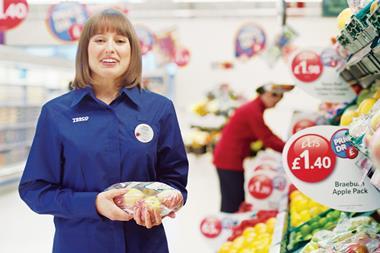

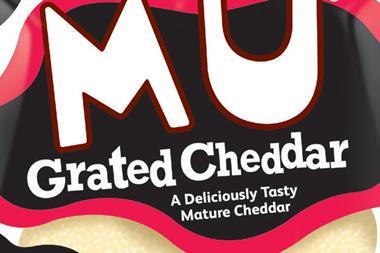



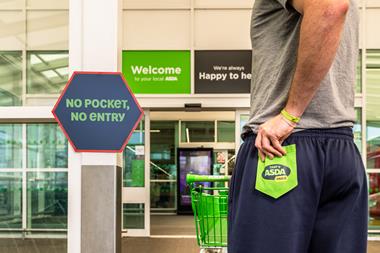

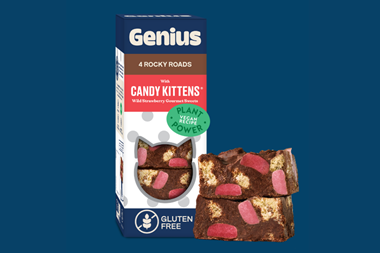
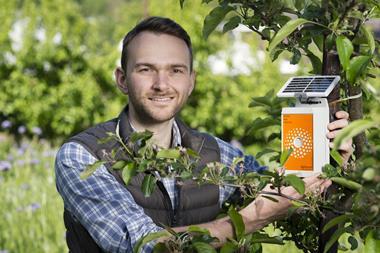

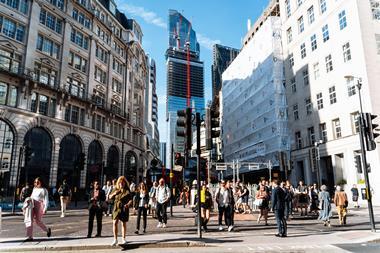
2 Readers' comments